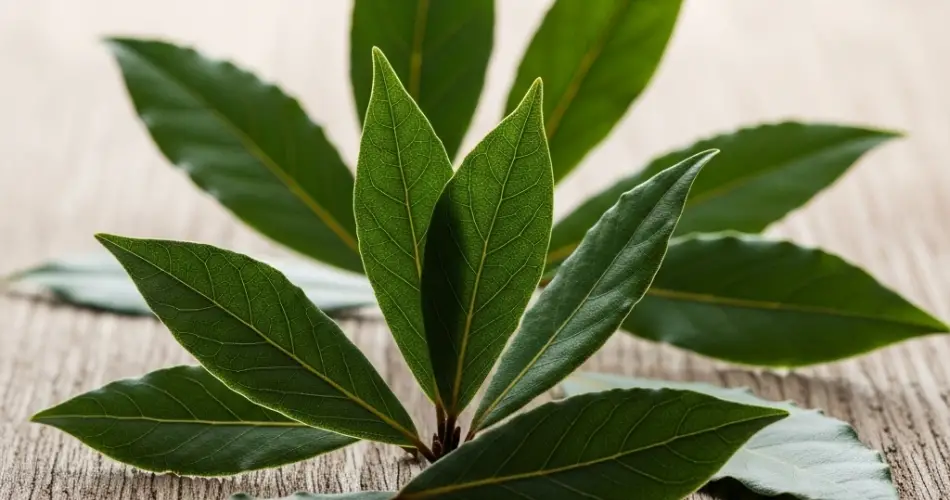Bay leaves are a staple in many kitchens, adding a subtle depth of flavor to soups, stews, sauces, and marinades. While fresh bay leaves have a strong aroma, dried bay leaves are more commonly used in cooking because they store well and retain their fragrance for months. If you grow your own bay laurel plant or have access to fresh leaves, learning how to dry and store them properly will ensure you always have this aromatic herb on hand.
This guide covers the best techniques for harvesting, drying, and storing bay leaves to preserve their flavor and quality for culinary use.
1. When and How to Harvest Bay Leaves
Bay leaves come from the Laurus nobilis plant, commonly known as bay laurel. The best time to harvest bay leaves is in late spring or early summer, once the plant is well established and the leaves are fully mature.
Harvesting tips:
-
Select healthy, deep green leaves that are free of blemishes or pests.
-
Avoid very young or very old leaves. Mature leaves—typically 3 to 5 inches long—have the most developed flavor.
-
Use clean, sharp scissors or garden pruners to snip leaves individually, or trim small branches if you plan to dry in bunches.
-
For the most intense flavor, harvest in the morning after the dew has dried, but before the day gets too hot.
2. How to Dry Bay Leaves Properly
Drying bay leaves helps concentrate their flavor and extends their shelf life. There are several effective drying methods to choose from depending on your available space and time.
Air Drying (Recommended for Best Flavor)
-
Rinse the leaves gently and pat them dry with a clean towel.
-
Bundle 5 to 10 leaves together by the stems and tie them with string or a rubber band.
-
Hang the bundles upside down in a warm, dry, well-ventilated place, out of direct sunlight.
-
Alternatively, you can lay individual leaves flat on a mesh rack or screen.
-
Drying can take 1 to 3 weeks, depending on humidity.
Oven Drying (Faster Option)
-
Preheat your oven to the lowest setting (around 170°F or 75°C).
-
Place the leaves in a single layer on a baking sheet lined with parchment paper.
-
Prop the oven door open slightly to allow moisture to escape.
-
Dry the leaves for 1 to 2 hours, checking regularly to prevent burning.
Dehydrator Method
-
Arrange leaves in a single layer on dehydrator trays.
-
Set the temperature to 95°F to 115°F (35°C to 46°C).
-
Dry for 2 to 4 hours, or until the leaves are crisp.
Regardless of the method, the leaves are ready when they’re brittle to the touch and snap cleanly when bent.
3. How to Store Dried Bay Leaves
Once dried, bay leaves need to be stored correctly to maintain their aroma and flavor over time.
Storage steps:
-
Allow the leaves to cool completely before transferring them to containers.
-
Store in an airtight container, such as a glass jar with a tight-fitting lid or a sealed tin.
-
Keep the container in a cool, dark place—like a pantry or cupboard—away from direct sunlight and moisture.
-
Avoid storing dried herbs near heat sources like stoves or ovens, which can cause them to lose potency faster.
If stored properly, dried bay leaves can maintain their quality for up to 1 year, though their flavor will slowly diminish over time.
4. Label and Date Your Herbs
To keep your spice cabinet organized and ensure you’re using the freshest ingredients possible, always label your containers with the name of the herb and the date it was dried.
As a general rule:
-
Use within 12 months for peak flavor.
-
Test for freshness by crushing a leaf—if it still has a strong scent, it’s good to use.
5. Optional: Freeze for Longer Shelf Life
If you want to preserve the flavor of bay leaves beyond one year, freezing is a great option.
-
Place dried leaves in a zip-lock freezer bag or airtight container.
-
Store in the freezer, where they’ll retain their aroma for up to 2 years.
-
When needed, take out only what you’ll use and return the rest to the freezer immediately.
Frozen dried bay leaves don’t need to be thawed before cooking—just add them directly to your dish.
Final Thoughts
Drying and storing bay leaves is a simple and effective way to ensure you always have a flavorful seasoning ready in your kitchen. By harvesting mature leaves, drying them properly, and storing them in a cool, airtight environment, you can extend the life and quality of this essential herb.
Whether you’re simmering a hearty stew or infusing a delicate broth, having your own home-dried bay leaves adds a personal, aromatic touch to every dish.



